If you’re running or own a business and are starting your online marketing efforts, you’ve probably heard the words, “Google Tag Manager” thrown around a time or two. You may be wondering what Google Tag Manager is and why it is important for your business. We will answer some of the most common questions that we hear when it comes to Google Tag Manager.
- What is Google Tag Manager?
- Is Google Tag Manager the Same as Google Analytics?
- Why Do I Need Google Tag Manager?
- What Do I Track With Google Tag Manager?
What is Google Tag Manager?
Table of Contents
ToggleGoogle Tag Manager is a management system that gives you the ability to easily update your codes or code fragments, that are together known as tags, usually for the purpose of tracking, on your website or app.
This is a free tool that also allows you to manage your marketing tags without having to modify the code. Basically, information from one source, such as your website, is shared with another source, like Google Analytics, through Google Tag Manager. The Tag Manager makes it much easier because all of the data is in one location.
Google Tag Manager makes it possible for marketers or even savvy business owners to manage their own codes without the need for a developer. Although the product is normally marketed with words such as “simple”, “easy and reliable”, “quick and easy”, this really isn’t always true. Tag manager will help also help with PPC management tracking.
Sure, Google Tag Manager CAN be easy, but this is only with a decent amount of technical knowledge or some form of training. You will need some technical knowledge to understand the process of setting up your tags, your triggers, and your variables.
Like everything else in life, it can be simple as long as everything is running smoothly. However, if your pixels start dropping, some technical knowledge will help you know why and how to fix the problem.
If you want to start setting up events, you will first need to know what an “event” is and how to use it with Google Analytics before you just go “setting up an events tag”.
It can be easy to juggle multiple tags in Google Tag Manager but make no fuss about it, there IS a learning curve.
Obviously, Google Tag Manager can add a wealth of value to your website and overall marketing game, but you need to understand that it isn’t just something you decide you want to try one day and go for it. Google Tag Manager essentially allows you to inject code directly to your website, and if this isn’t done correctly, it has the potential to break the whole site.
Google Tag Manager can be broken down into three separate parts: tags, triggers, and variables. Everything else should, for the most part, fall under one of these three categories.
Google Tags
Google Tags are small snippets of code or tracking pixels. These tags are what tells Google Tag Manager exactly what to do.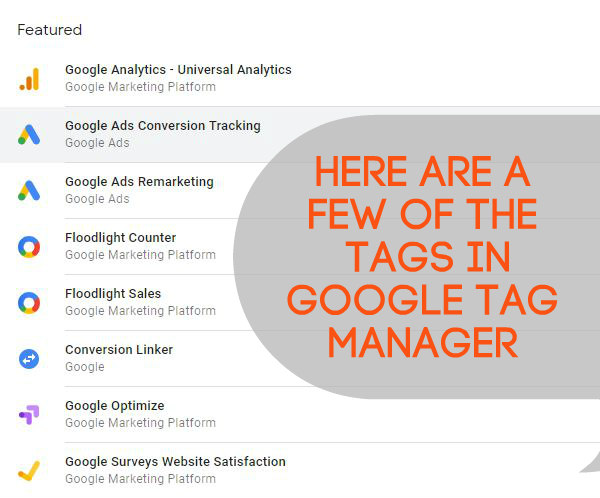
A few common actions include things like: tracking, whether it be universal, conversion, etc., remarketing, heatmap, or Facebook pixels.
Google Triggers
Google Triggers are what tells Google Tag Manager when to the action.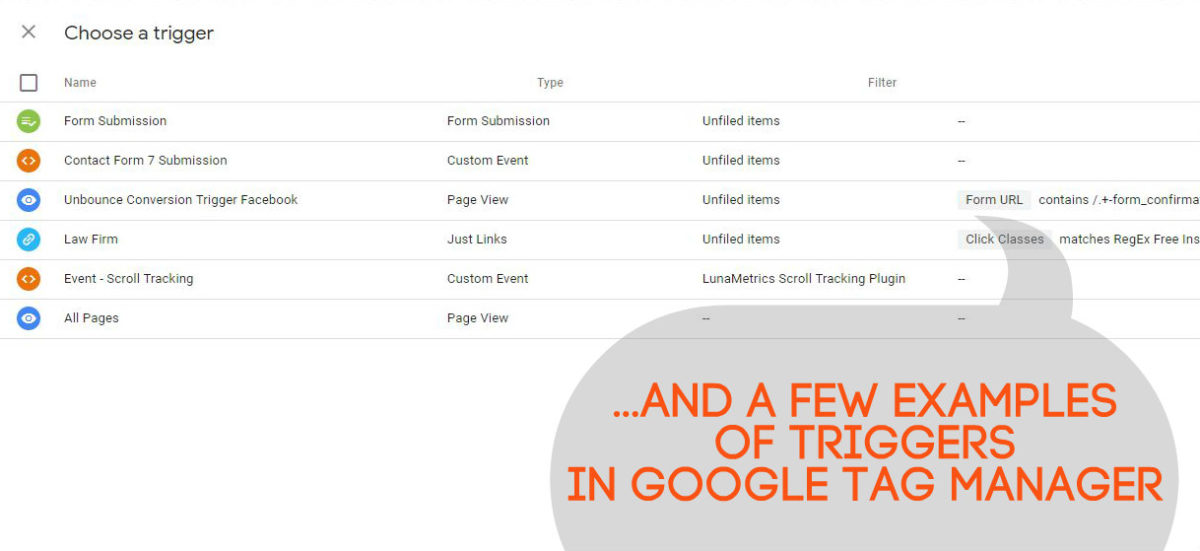
Do you want the tags to fire when the page is loaded, when the page has been up a certain length of time, or when a link has been clicked, or some other custom trigger?
Google Variables
Google Variables are anything else, any other additional information, that Google Tag Manager may need in order for either your tag or your trigger to work.
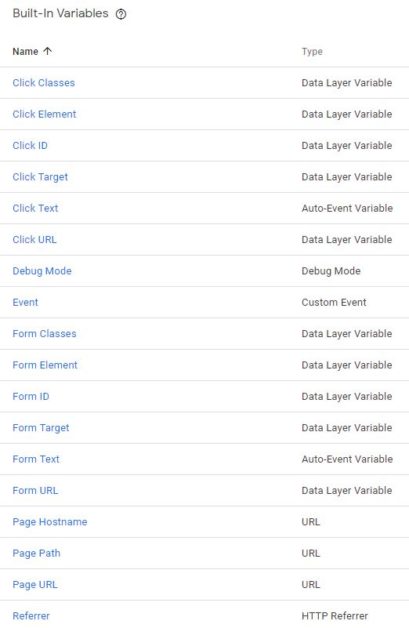
The most common and basic example of this is the Google Analytics UA number, more commonly known as the tracking ID number. Google Tag Manager comes equipped with several built-in variables (listed above), but it also lets you define your own variables.
These three elements combined are the most basic elements of Google Tag Manager that you’ll need in order to start managing your own tags through Google Tag Manager. If you’re completely lost at this point, it would probably be best to get some help or hire this part out! If you’re following along, we’ll keep moving forward.
Is Google Tag Manager the Same as Google Analytics?
No. Google Tag Manager is not the same as Google Analytics. Tag Manager is a completely separate and different program that is used for storing and managing code.
There is no way to compile any data for analysis in your Google Tag Manager account.
Google Analytics is used for actually reporting the data that has been recorded.
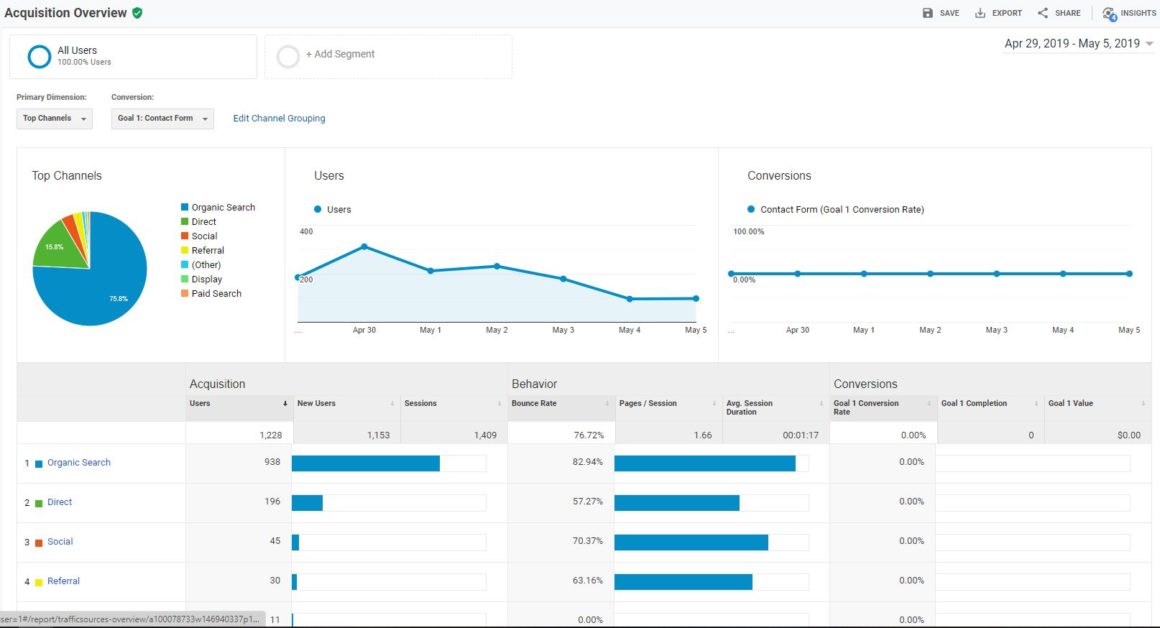 All of your conversion tracking, goals, and filters will continue to be managed in Google Analytics, as well as all of your reporting, such as conversion reports, custom segments, sales, bounce rates, engagements, etc.
All of your conversion tracking, goals, and filters will continue to be managed in Google Analytics, as well as all of your reporting, such as conversion reports, custom segments, sales, bounce rates, engagements, etc.
Why Do I Need Google Tag Manager?
Like we said before, there is a definite learning curve when it comes to Google Tag Manager. However, once you’re over the learning curve “hump”, GTM opens a whole world of opportunities, as a marketer or small business owner, that were never present before. Even a dentist with no marketing background can set these tags up.
You can use Google Tag Manager to customize the data that is sent to your Google Analytics account.
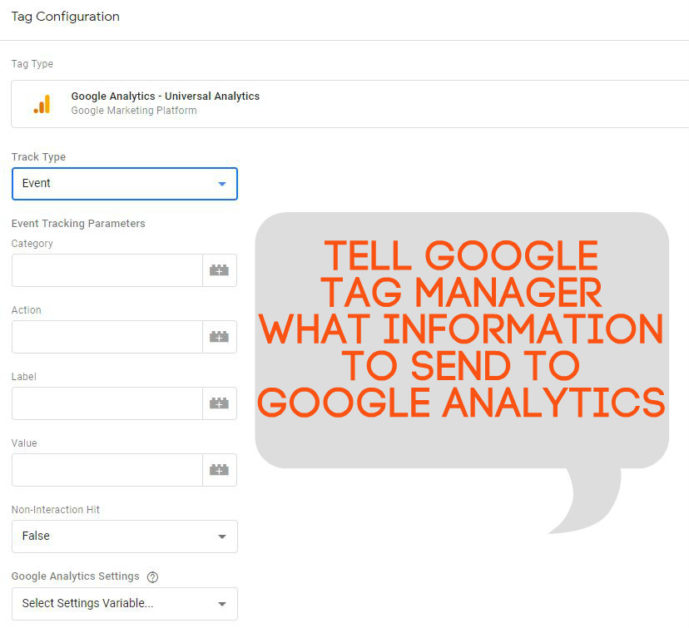
You can set up events, and also track them. For example, if you wanted to track all of your outbound links, all you would do is: log in to your Google Tag Manager account, choose the category name, choose the action and label. Then choose the offsite link, select “click”, and click URL. Yes, it’s easy for us to give you step by step instructions, but you would have to have a basic technical knowledge to know what this is for and why you would need to do this.
Google Tag Manager can also help your site load faster, only if you are using a good amount of tags. This is because all of your third-party code will be in one unique location.
It can also work on products that are not Google, which is always helpful.
You do have the flexibility to test out whatever you want, for the most part, before actually firing this step. Tag manager does have a preview and debug mode so you are able to see what’s working and what’s not before you make any action live. This will show you what tags are firing correctly on your page.
Like we said earlier, you will need some technical knowledge, even just to do the basics. This will be a time investment if you don’t know what you’re doing. Unless you have a background as a developer, you will need to take a decent amount of time to set aside for learning, research, and testing. You will also need to set aside some time to troubleshoot issues that may arise. There will be troubleshooting, trust us on that. This is especially true if you are not messing with the program regularly. If you want to move on to more complex tags, you will more than likely need to hire a marketing company or a developer to help you.

What Do I Track With Google Tag Manager?
Essentially, if you can figure out a way to set it up, you can track whatever you want with Google Tag Manager. You can track events, such as clicks, downloads, cart adds, you name it. Also, you can track forms of abandonment, such as form abandonment or cart abandonment. Then, there’s scroll tracking and video tracking that you can also fire.
You’ll want to group your rules with Google Analytics and Google Tags. This will give you the ability to see which elements in your pages, blogs, etc lead to the most conversions.
The possibilities are endless, here. However, the more tags and data sources you use, the more difficult it will be to manage.
Conclusion
Google Tag Manager can make your marketing easier, that’s for sure. You have to be willing to set aside the time and have the patience to learn how to use it correctly. Also, you’ll want to make sure that you are actually able to use the data that you’ve set up in Google Tag Manager. Otherwise, it’s all in vain. If you’re having trouble with Google Tag Manager, give us a call at Digital Logic! We offer free website audits and free, no obligation consultations daily!





